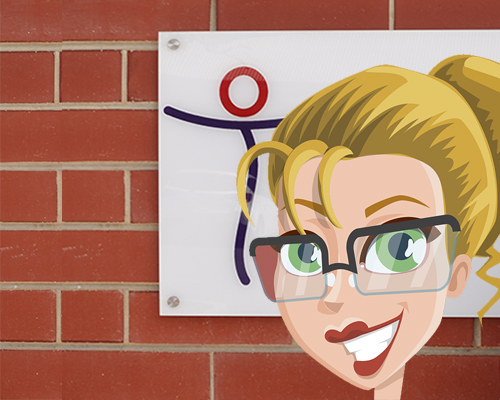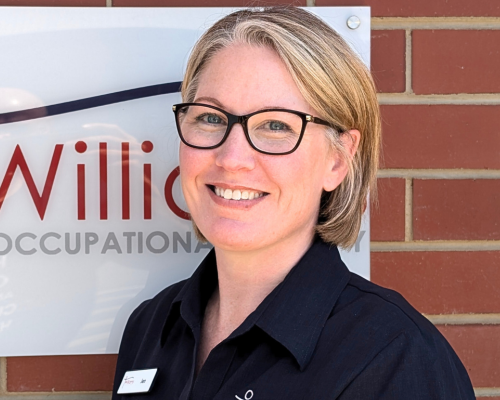We know you will have a few questions regarding driving and assistive technology, so we have put together a listing of frequently asked questions to help you understand the process.
What is occupational therapy driver assessment?
An occupational therapy driver assessment is a functional assessment based around the daily activity of driving. An Occupational Therapist (OT) additionally trained in the field of driving will assess your function for driving starting with an initial assessment or pre-drive assessment. In this assessment, the occupational therapist gets to know you and your disability or medical condition. The Occupational Therapist will determine in this assessment whether it is appropriate to do a follow-up assessment, also known as an on-road assessment.
The full assessment will determine the best way forward for your driving future when having to deal with a medical issue.
An Occupational Therapy Driver Assessment will help you navigate the licensing system based on your personal circumstances. The assessment will determine the best rehabilitation plan for your medical condition. It will also determine the best compensatory strategies for the medical condition if required.
Why should I choose to engage Williams Occupational Therapy?
Williams Occupational Therapy has built a reputation for assisting clients with a disability or medical issue who have the desire to gain, regain or maintain their driver’s license.
- We are not just an assessment agency.
- We are not just a driving school.
- We are not just car modifiers.
Williams Occupational Therapy is all of these. And more!
We have been doing this since 2011, so we have a lot of experience and know what is going on. Recently Williams OT has taken our skills and knowledge of the NDIS system and expanded this into assisting people with all areas of mobility issues and prescription of aids and devices for wheelchairs, scooters, other aids and equipment and environmental modifications to help with access.
As a client of Williams Occupational Therapy, you will not be handed around from one service provider to another. We will assist you through the entire process of reaching your driving and mobility goals.
This is all we do.
We are focused on meeting your mobility and independence needs.
We strongly believe that we offer you the most comprehensive and premium driving and mobility prescription service. Get in touch to see if we can help you.
I have a disability and want to learn to drive. How should I go about it?
We believe that we can offer you the highest quality training. We do not guess. We do not conduct a trial-and-error approach. And we do not send you down a path that might fail.
At Williams Occupational Therapy, we base our intervention around a full assessment of your functional ability. This assessment provides insight into your medical condition or disability and how best to compensate for this for the long-term activity of driving. We do not jump straight into lessons.
Due to the demand for our services, we can only assist you to get you started, assist with organising funding, and figure out what you need. Where possible, we refer you to another driving school to help you in the final stages of gaining your licence.
If you are unsure if you have a future in driving or if you want some advice before sitting for your learner’s permit, an Occupational Therapy initial driver’s assessment can assist in the likelihood of successful driving. They will also help determine the best path forward and will assist you along this path.
How is a Williams Occupational Therapy driver assessment different from a Department of Transport assessment?
A Department of Transport driving assessment is completed around a set route. It does not take into account the needs of the medical condition. It is not a solutions-based assessment. This is usually the final step in the process of being issued with a license and is a pass-or-fail assessment.
A Williams Occupational Therapy driver assessment is a detailed assessment where we get to know you, your need to drive, and the details of your medical condition or disability. This determines the best solution for the future of your driving and sets you on the path to passing the Department of Transport assessment if required.
Why should I have an Occupational Therapy Driver Assessment prior to having modifications or equipment installed on my vehicle?
An Occupational Therapist takes into account the entire needs of the person. If you have never had an Occupational Therapy Driver Assessment, it is strongly recommended. A Williams Occupational Therapy driver assessment includes an assessment of the limbs required and movements required to use modifications. Too often, we see clients who have had a piece of equipment installed that has aggravated the joints in their good limbs. An Occupational Therapist understands the forces and strength required to use specific modifications to help avoid such issues.
An Occupational Therapist will also help navigate you through the entire process of having modifications installed. This includes assessment and reassessment, if required, to make sure the modifications are the right fit for you prior to purchase. They will also help with having the modifications recognised on your licence for future driving and having your vehicle assessed through the Department of Transport to ensure the vehicle is roadworthy following the installation of equipment. Most importantly, as a requirement of the NDIS, we will help you apply for the funding required to pay for the modifications that you need.
My driver's license has been medically suspended. Now what?
If you believe that you have the function to return to driving, then the team at Williams Occupational Therapy may be able to assist. Williams Occupational Therapy has a team of professionals that are dedicated to assisting clients to gain, maintain or regain their driver’s licenses. In most cases, if your license has been medically suspended through a medical event, you need to have an Occupational Therapy Driver Assessment.
You do not need pre-approval from your medical specialist to have an initial assessment with a driver-trained Occupational Therapist. However, we advise that it may be in your best interest to discuss your goal of driving with your medical team first.
Before any on-road assessment, you will need to have medical clearance from your doctor or medical specialist. If you have had an initial assessment with one of our Occupational Therapists, they will assist you through this process by producing a report for your medical team which will have recommendations of how to best meet your goal of returning to driving.
Why do I need an OT for my Assistive Technology (AT) needs?
At Williams OT, our Assistive Technology (AT) Occupational Therapist is able to thoroughly assess your functional needs and make recommendations for the right equipment solutions for you. We have a detailed understanding of AT on the market and can offer informed choices and advice. This means the AT recommended is tailored for you and will assist with funding approval from NDIS. We are experienced in working with NDIS and can communicate with NDIS on your behalf and can complete all the applications for funding your individualised equipment needs.
Why can’t I buy equipment from my Core supports?
There is usually funding in the NDIS Core Support funding of your plan which is intended for low-risk, “off-the-shelf” equipment. Driving aids do not fall under this category and we need to apply for funding. For assistive technology, it is recommended that you work with your OT closely to organise AT from this section as well, to provide the necessary education, support and assistance with the ordering process. The NDIS guidelines outline the appropriate use of this funding, which needs to be directly associated with your disability. If it is not an “off-the-shelf” item, you are more than likely going to need a support letter for funding.
Why do I need a Support Letter for Assistive Technology (AT)?
A Support Letter, or official NDIS Application for assistive technology provides the information NDIA requires to fund your equipment. This is essential to ensure your equipment is justified and gives you the best chance of achieving funding. It documents the clinical reasoning and explains the need for the equipment and why it is relevant to your everyday life. There are different application requirements for different levels of equipment/ AT, and Williams OT can support you every step of the way.
Low-cost/low-risk, Mid-level, High-cost/high-risk technology? What does this mean?
The NDIS classifies different levels of equipment and the associated application requirements. These levels are related to the cost and level of risk in using the equipment. You can find out more on the NDIS website, but in summary, the levels of Assistive Technology are;
- Low cost -Low risk (< $1500) = items off the shelf that are low risk and cost less than $1500. They must not be considered an “everyday item” that people would be expected to buy themselves (e.g. an iPad or mobile phone).
- Mid-level technology ($1500-$15000) = mid-cost equipment, often powered items such as electric recliners/beds, basic wheelchairs, or power assist devices.
- High cost-High risk AT (>$15000) = fully customised equipment that is tailored to your individual needs (e.g. a customised manual or powered wheelchair or vehicle modifications).
I don’t have any Assistive Technology funding in my NDIS plan, or the specific item is not listed in the plan. What do I need to do?
Utilising your Capacity Building funding in your NDIS plan, complete an assessment with one of our Occupational Therapists and participate in equipment trials, and your OT will obtain the necessary quotes and complete the application. The application and quotes are submitted to NDIS for approval and will be added to your plan, usually through a Plan Review. If you are due for a new plan shortly, this can sometimes make the approval process faster. Otherwise, NDIS has guidelines for how long it takes for an application to be considered. If you sign a “Consent to Share “ form, Williams OT can follow up with NDIS on your behalf.
How long do I need to wait? When will I know of NDIS decision?
The time NDIS takes to respond to an application can vary. As a guide, we suggest a review call to NDIS to check on the progress of the application three weeks after it is submitted. Depending on the level of equipment/ type of application, some applications can take longer than others. As soon as written approval is received, your OT will order the equipment through the supplier and advise of the likely wait time for delivery. This can also vary depending on supply and shipping time etc.
What is the cost and is there any funding available for occupational therapy AT assessments, driver assessments, lessons, or modifications to my vehicle?
Unless you are covered by an insurance scheme, such as NDIS, Lifetime Support Authority, Return to Work SA, etc., Occupational Therapy Driver Assessments, lessons and vehicle modifications are rarely covered by your private health insurance in full. We encourage you to contact your own private health insurance agency for reimbursement guidelines. If you are covered by an insurance scheme, in most cases, the cost of a driver assessment and associated follow-up recommendations are fully covered. However, you need to discuss this with your case manager.
Williams Occupational Therapy asks for all privately funded assessments and modifications to be paid in full before service. However, we understand that finding the funds can sometimes be difficult, and we don’t want people to be off the road longer than necessary. Therefore, we have organised payment plans with terms and conditions to help you advance as soon as possible.
For the full cost of an assessment and for terms and conditions regarding payment for services, please contact us.
Need More Information?
For more information and to further assist you, the team at Williams OT have developed two guides. We encourage you to download a copy of the guide that is appropriate for your needs.
If you have more questions that have not been answered above or in our free guides, we encourage you to email the team at admin@williamsot.com.



